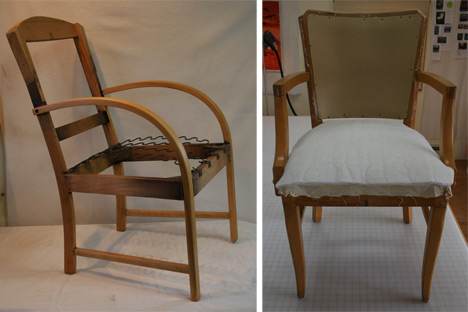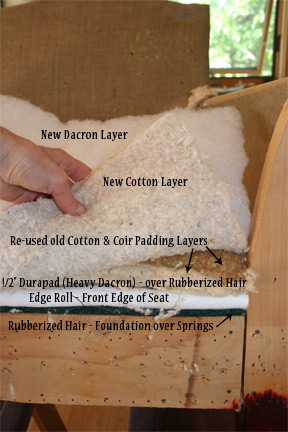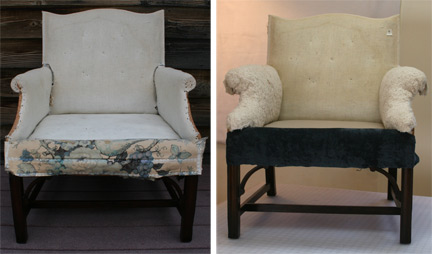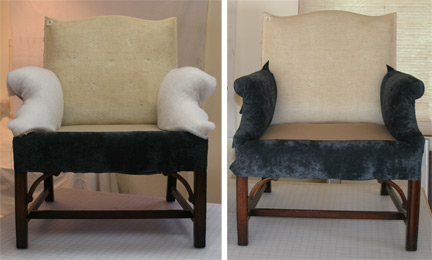After completing Step 5 – Cleaning, Repair & Refinishing on your DIY upholstery project, you know that your chair’s foundation is solid and ready to re-build, beginning with the padding layers.

Once you have cleaned, repaired & applied a new finish to your frame, you are ready to build the upholstery layers back up
Now is the time to re-use the original padding that you removed in Step 4 – Deconstruction or apply new padding if the old padding is unusable. Here are three reasons to reuse the old padding, if it is at all possible:
- The old padding bears the frame’s ‘imprint’ and defines the chair’s original shape
- Recycling the old material makes your job of rebuilding easier
- Less stuff in the landfill – it’s sustainable!

This chair needed to be rebuilt from the ‘bare bones’, reinforcing the seat springs at the foundation level, then layering up from there with an eye to comfort

New padding material may be mixed with the original padding to create a comfortable seat.
Even if you do have to use all new padding it is useful to have the old layers handy as a reference for shaping the new layers.

The original muslin-covered horsehair padding was left intact on this chair – here a layer of new cotton padding has been added to the arms
Horsehair was the padding of choice in traditional upholstery and is still used by skilled upholsterers in restoration & reproduction work today. Its properties provide a firm and comfortable base which may be augmented with a layer of cotton upholstery padding to fill out the shape and soften hard edges. Cotton is a difficult material to judge when applying it to your frame, since it quickly loses its initial loft with handling.

A layer of new dacron batting has been applied over the cotton padding to lend loft and softness under the final fabric layer
A top layer of dacron batting over everything helps protect the under-layers and provides a smooth ‘non-sticky’ surface for final fabric application.
Previous: Step 5 – Cleaning, Repair & Refinishing
Next: Step 7 – Fabric Layout & Cutting
Join NaturalUpholstery.com’s mailing list to receive our monthly newsletter with reupholstery tips, creative inspiration, and resources for using natural, non-toxic materials for upholstery.
Leave A Comment